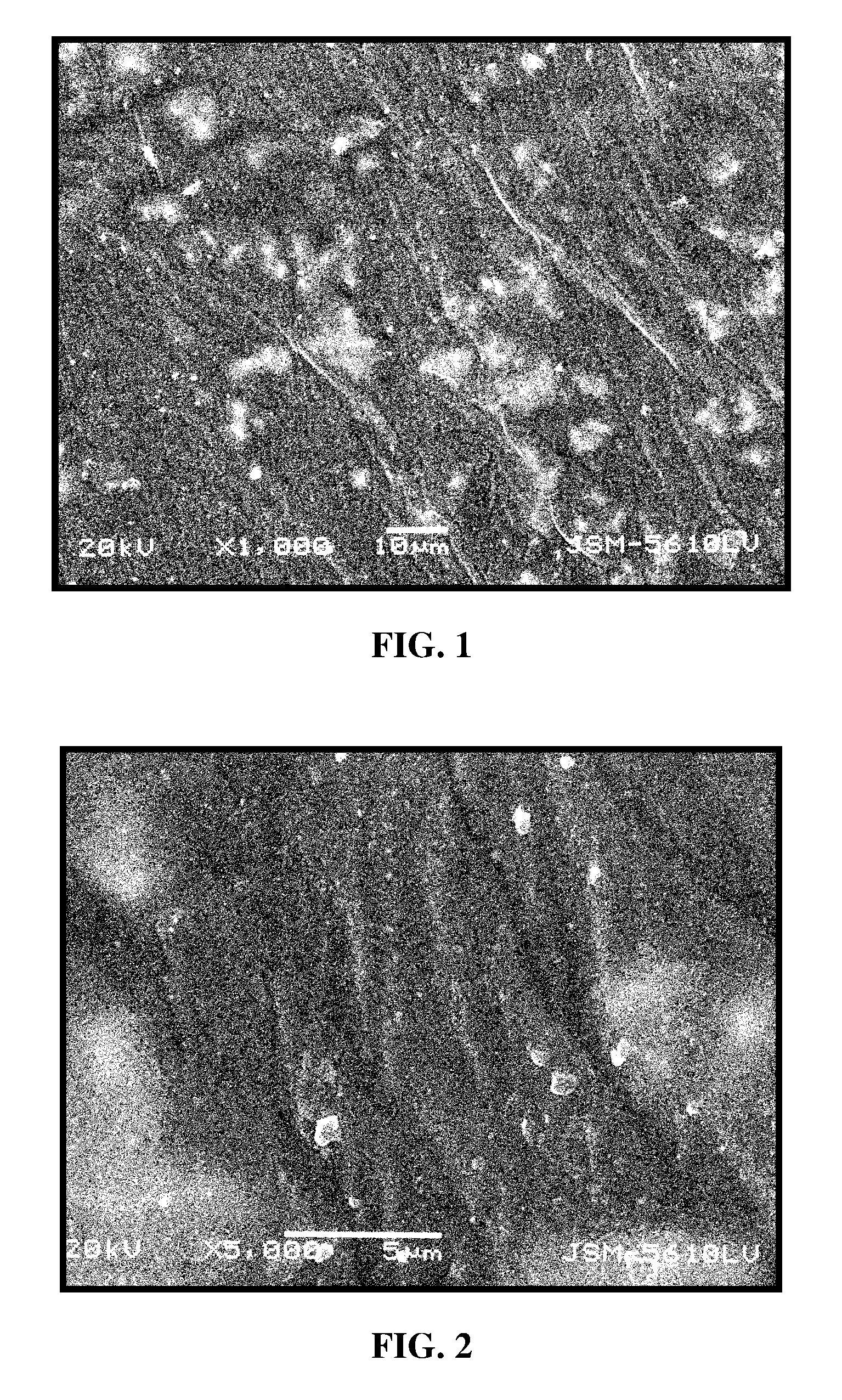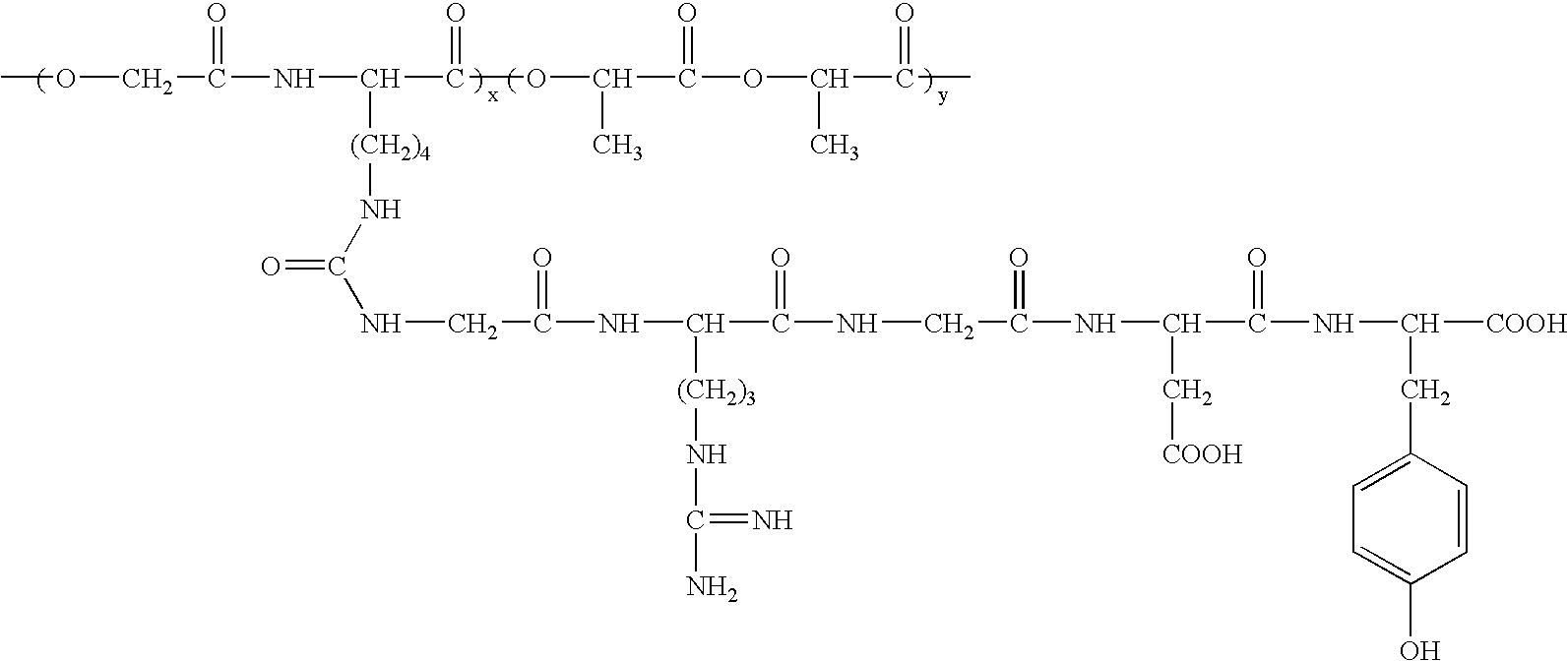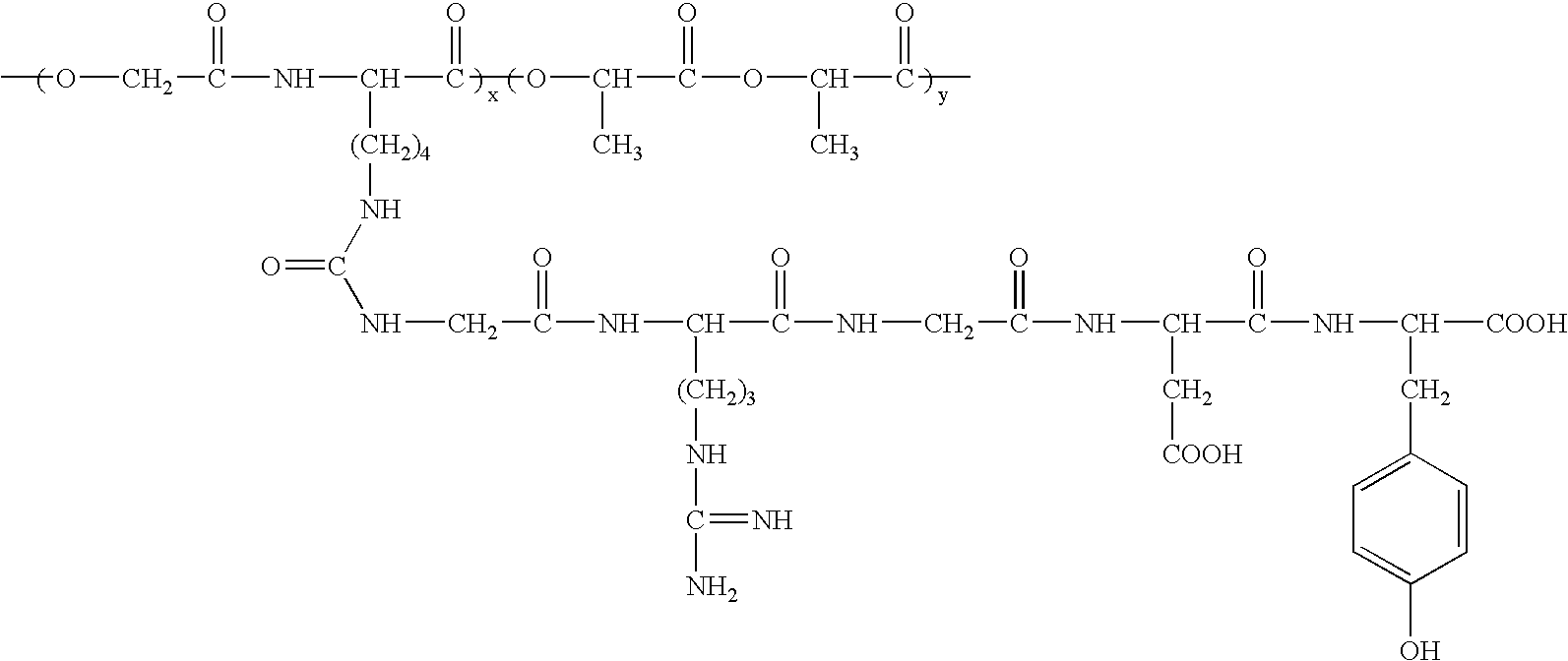Rgd polypeptide grafted poly (glycolic acid-l-lysine-l-lactic acid) / beta tricalcium phosphate composite material and preparation method thereof
a polypeptide and polypeptide technology, applied in the field of biomaterials, can solve the problems of scar tissue hyperplasia, limited quantity of autologous bioactive materials and achieve the effects of improving the mechanical strength of nerve conduits, good biocompatibility, and low basicity
- Summary
- Abstract
- Description
- Claims
- Application Information
AI Technical Summary
Benefits of technology
Problems solved by technology
Method used
Image
Examples
embodiment 1
[0017]The preparation method of RGD polypeptide grafted poly (glycolic acid-L-lysine-L-lactic acid) / β-tricalcium phosphate composite material includes the following steps:
1) Preparing 3-[4-(Benzyloxycarbonylamino) Butyl]-Morpholine-2,5-Dione Monomer
[0018]50 ml triethylamine (C2H5)3N and 50 g Nε-benzyloxycarbonyl-L-lysine acid are added to 500 ml 1,4-dioxane (C4H8O2). Then 30 ml bromoacetyl bromide (BrCH2COBr) is dropped into the above-mentioned 1,4-dioxane solution at 10-25° C. The reaction is followed by Thin Layer Chromatography (TLC). The reaction product is extracted by diethyl ether twice. The extract is washed by water twice or three times, dried by sodium sulfate. The solvent is recovered in vacuum, and the residual products are used for next reaction.
[0019]The residual products are dropped to 1500 ml N,N′-Dimethylformamide (DMF) suspension liquid containing 39 g NaHCO3 at 50-110° C. The reaction is followed by TLC. After reclaiming of the solvent in vacuum, the reaction prod...
embodiment 2
1) Preparing 3-[4-(Benzyloxycarbonylamino) Butyl]-Morpholine-2,5-Dione Monomer
[0026]50 ml triethylamine and 50 g Nε-benzyloxycarbonyl-L-Lysine are added to 500 ml 1,4-dioxane. Then 30 ml bromoacetyl bromide is dropped into the above-mentioned 1,4-dioxane solution at 5-10° C. The reaction is followed by TLC. The reaction product is extracted by diethyl ether twice. The extract is washed by water twice or three times, dried by sodium sulfate. The solvent is recovered in vacuum, and the residual products are used for next reaction.
[0027]The above-mentioned product is dropped to 1500 ml DMF suspension liquid containing 39 g NaHCO3 at 50-110° C. The reaction is followed by TLC. After reclaiming of the solvent in vacuum, the reaction product is extracted by ethyl acetate several times, washed by water twice or three times and dried by sodium sulfate. After reclaiming of the solvent in vacuum, waxy solid is obtained. Then the waxy solid is dissolved in acetic ether and purified by column c...
embodiment 3
1) Preparing 3-[4-(Benzyloxycarbonylamino) Butyl]-Morpholine-2,5-Dione Monomer
[0033]50 ml triethylamine and 50 g Nε-benzyloxycarbonyl-L-lysine are added to 500 ml 1,4-dioxane. Then drop 30 ml bromoacetyl bromide at 10-25° C. and follow the reaction by TLC. When the reaction is over, extract the product of reaction by diethyl ether twice. The extractions liquid is washed by water twice or three times, and sodium sulfate is added to dry. The solvent is reclaimed in vacuum, and the residual products are used for next reaction.
[0034]The above-mentioned product is dropped to 1500 ml DMF suspension liquid containing 39 g NaHCO3 at 50-110° C. The reaction is followed by TLC. After reclaiming of the solvent in vacuum, the reaction product is extracted by ethyl acetate several times, washed by water twice or three times and dried by sodium sulfate. After reclaiming of the solvent in vacuum, waxy solid is obtained. Then the waxy solid is dissolved in acetic ether and purified by column chroma...
PUM
| Property | Measurement | Unit |
|---|---|---|
| particle size | aaaaa | aaaaa |
| particle size | aaaaa | aaaaa |
| diameter | aaaaa | aaaaa |
Abstract
Description
Claims
Application Information
 Login to View More
Login to View More - R&D
- Intellectual Property
- Life Sciences
- Materials
- Tech Scout
- Unparalleled Data Quality
- Higher Quality Content
- 60% Fewer Hallucinations
Browse by: Latest US Patents, China's latest patents, Technical Efficacy Thesaurus, Application Domain, Technology Topic, Popular Technical Reports.
© 2025 PatSnap. All rights reserved.Legal|Privacy policy|Modern Slavery Act Transparency Statement|Sitemap|About US| Contact US: help@patsnap.com



